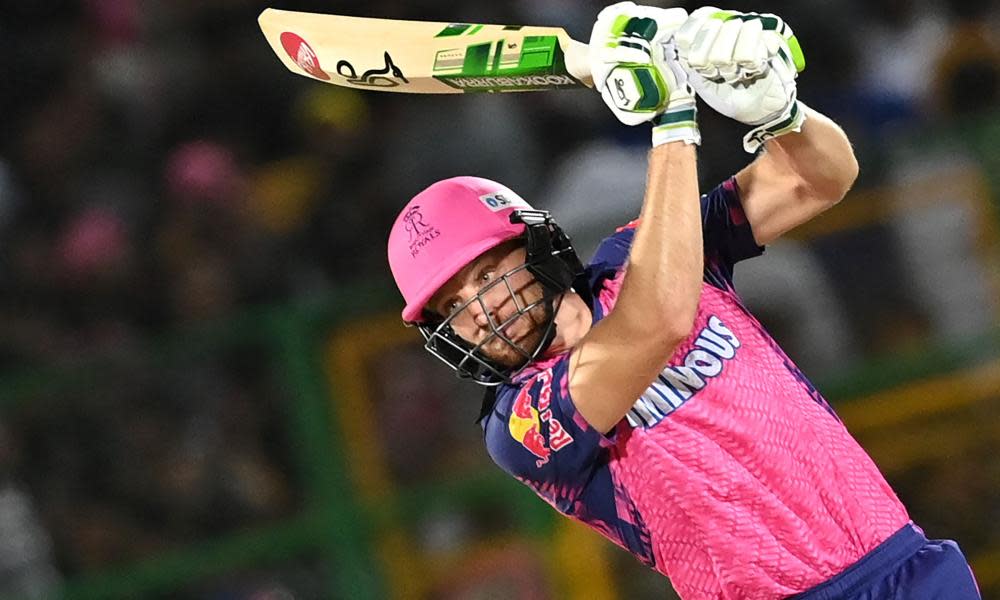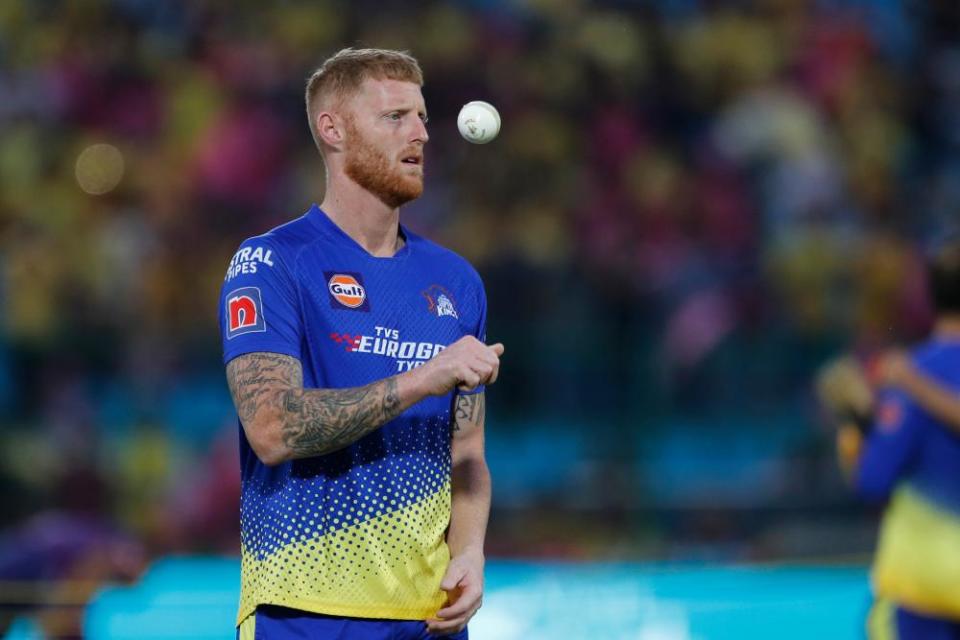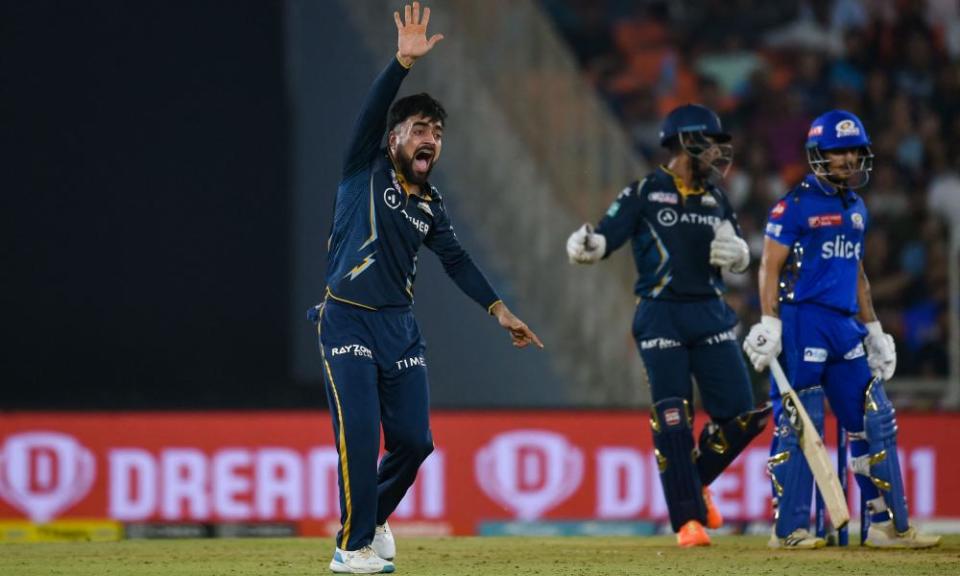IPL 2023: the state of play, stars so far and how England players are faring

What have I missed?
Not much, just the first 68 games. The IPL is a curious beast: the biggest tournament in cricket, the richest in any ballgame, the greatest show in Asia – and yet eminently missable. Its bosses at the Indian board still haven’t worked out how to give it meaning. It works for the players and coaches, who get massive fees and two months of further education. To most cricket lovers, though, the teams still feel like mere franchises and the story of each game is written in invisible ink.
Who’s winning?
This is cricket – nobody’s ever winning till they’ve won. The best team has been Gujarat Titans, top of the table for the second year running. They were the only side to win eight of their first 12 matches, which is especially impressive as (a) they are the holders, so the hunted not the hunters, and (b) they were founded in 2021.
At the bottom of the pile, two teams have had a stinker: Sunrisers Hyderabad, coached by Brian Lara, and Delhi Capitals, captained by David Warner. The other seven have been much of a muchness, all winning six or seven of their first 12 or 13 games. Looking at the table, you might deduce that Twenty20 is 50-50.
How have England’s players been doing?
As Jeff Beck sang, they’re everywhere and nowhere, baby. There are plenty of them, but they are often on the bench. It’s quite an achievement to render Ben Stokes invisible, but Chennai Super Kings have managed it. England’s Test captain has played two games, making 8 and 7 and bowling one over (none for 18); after six weeks without a start, he found the CSK coach, Stephen Fleming, calling him “batting cover”.

Joe Root has been almost as hard to spot, playing three games for Rajasthan Royals, bowling two overs (none for 14), and batting just the once. He made 10 and, like a true Englishman, took part in a right Royal collapse, 59 all out in 10.3 overs.
The most visible has again been Jos Buttler, England’s white-ball GOAT. Opening as usual for Royals, he has returned to earth after last year’s stratospherics, with more ducks (five) than fifties (four). England’s next superstar, Harry Brook, has also been a model of inconsistency, scoring 100 not out in one innings for Sunrisers Hyderabad and scraping 63 for eight in the rest.
Jason Roy, Phil Salt and Liam Livingstone have played about half the time and been respectable, but there have been only two English regulars apart from Buttler. One is Moeen Ali, who has had a quiet time with Chennai Super Kings. The other is Sam Curran, who moved from one set of Kings in Chennai to another in Punjab. He has sparkled with the bat but struggled with the ball.
Curran’s most memorable day came when Shikhar Dhawan was injured and he took over as captain. Typical. We send them our seasoned captains – Stokes, Buttler, Root – and the only one they want is somebody who has never led a professional team.
Who have been the stars then?
Among the batters, one young blade and one veteran. This year’s meteor is Yashasvi Jaiswal, 21, Buttler’s opening partner for Royals. This year’s grand old man is Faf du Plessis, now 38 and captaining Royal Challengers Bangalore. You could think he had his hands full being Virat Kohli’s boss, but he has also found time to be the first man to 600 runs.
Among the bowlers, it’s been the year of the leggie. The first three players to reach 20 wickets were Rashid Khan of Titans, Yuvendra Chahal of Royals and Piyush Chawla of Mumbai Indians. The most incisive seamer has been Mohammed Shami of Titans. In a list dominated by India’s big names, Rashid is the only overseas bowler making hay.
What about England’s bowlers?
Only one has enhanced his reputation: Mark Wood, whose 11 wickets have come at the phenomenal strike rate of one every nine balls. At the other end of that scale was Jofra Archer, who needed 60 balls for each of his two wickets before succumbing to yet another stress fracture. They left India early, Archer for Belgium to see a doctor, Wood for Durham to await the birth of his second child.
Any trends?
This year the teams are allowed to bring on a sub – a full one, allowed to bat and bowl. Some sages declared this the end of the all-rounder, as the side batting second could simply replace a tailender with a specialist batter. Which goes to show you never can tell, because all-rounders are still thriving – the great Ravi Jadeja of India and his apprentice Axar Patel and Mitch Marsh of Australia, now better at bowling than batting.

When does it get interesting?
On Tuesday. That’s when, after 70 league games, we get the first of the four knockouts. But you could just wait for the final on 28 May, clashing with the climax of some other Premier League.
What’s it all about, really?
Money. The IPL media rights for 2023-27 raked in $6.2bn, which makes each game worth $15m. That’s $4m more per match than Premier League football. The franchises are so rich that they are now buying up franchises in other countries and aiming to tie the best players to 12-month contracts, thus putting another nail in the coffin of Test cricket. So it’s not just about money: power is involved, too. In this league table, sport comes a distant third.

 Yahoo News
Yahoo News 
